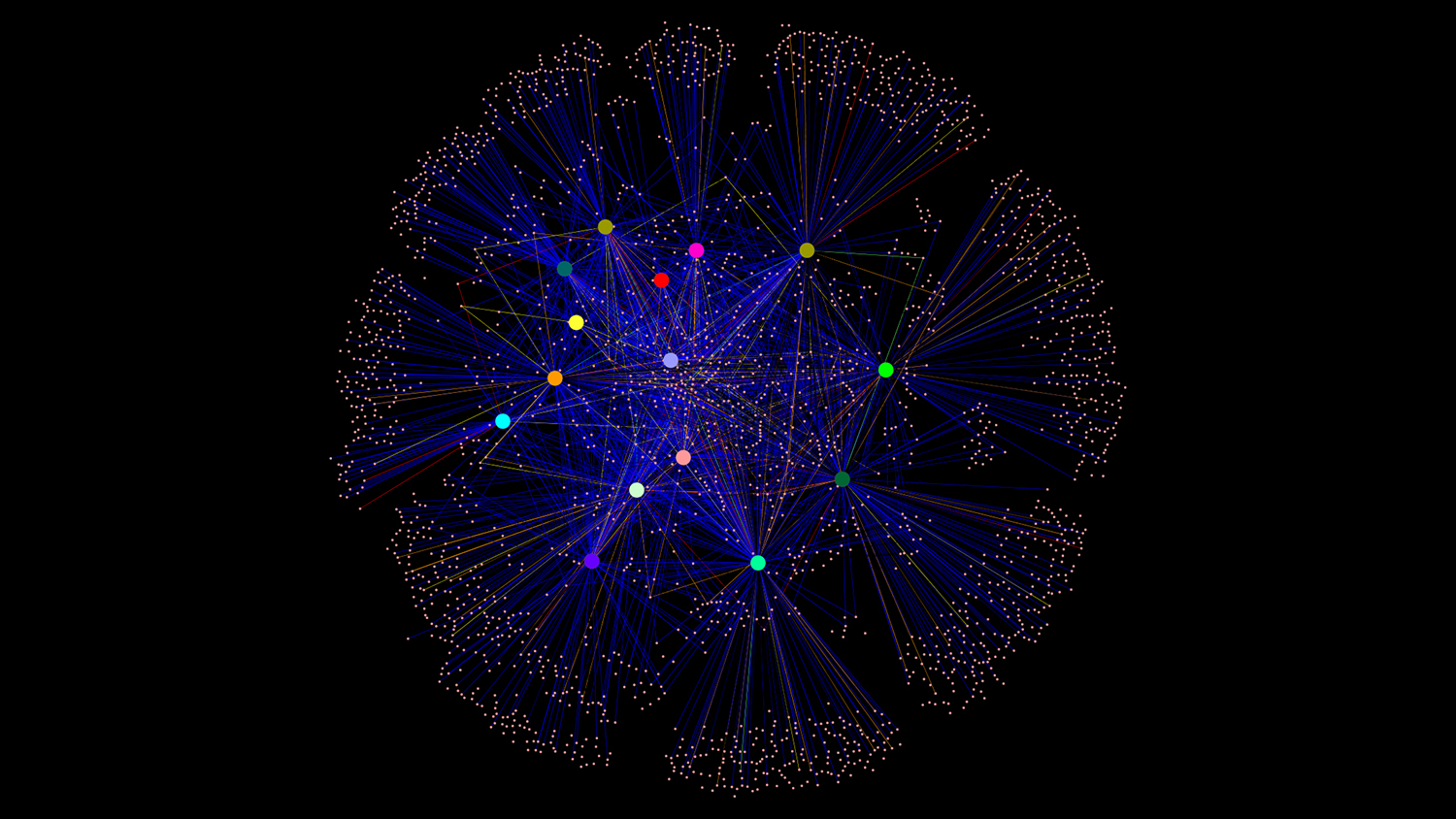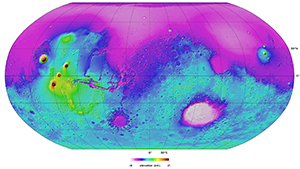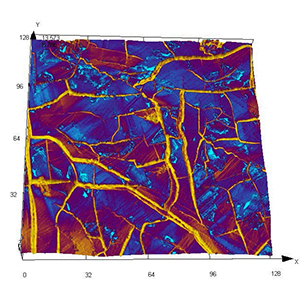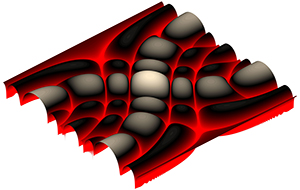Bedbugs and Mars: Graphics Winners of the 2017 NC State Research Image Contest

First place for graphics and illustration among faculty and staff goes to a Mars map from Paul Byrne, an assistant professor in the Department of Marine, Earth and Atmospheric Sciences who specializes in planetary geology.

“The planet Mars has fascinated humanity for thousands of years,” Byrne says. “Recent spacecraft missions have returned an unprecedented view of the Red Planet, equipping us with new information with which to understand Mars’ geological history. Here, topographic data for the entire planet show the vast, low-lying plains to the north, enormous impact basins in the southern hemisphere and, to the west, the largest volcanoes in the solar system – the tallest of which, Olympus Mons, towers 21 km above its surroundings!
“Mars is very like our own world in some respects, yet vastly different in others,” Byrne adds. “Exploring the Red Planet in three dimensions – that is, with both photographic images and topography – we can start to investigate questions impossible to tackle with images alone. As a result, data sets like this one (global topography from the Mars Orbiter Laser Altimeter instrument, flown on NASA’s Mars Global Surveyor) enable us to understand when and where volcanic activity was prevalent on Mars, for example, which in turn tells us when the planet was geologically active, and possibly why it’s no longer active today.”
The first place winner for graduate students and postdocs is Michael Fisher (for the image at the top of this post), a Ph.D. student in the Department of Entomology and Plant Pathology, whose image shows an “Operational Taxonomic Unit (OTU) network” that illustrates the diversity of bacteria among bed bug populations around North Carolina. Each colored dot in the center represents a different sample location around the state. The sand-colored dots on the periphery correspond to an individual OTU of bacteria connected by the blue lines, shedding light on the relationships. The bed bug gut microbiome remains poorly understood, including bacterial species abundance, diversity, and dynamics. This project examined the gut microbiome of the common bed bug Cimex lectularius from 15 populations around North Carolina.
“Bed bugs have not been largely implicated in the epidemiology of disease transmission, but they can acquire a myriad of pathogens from their hosts, and may be important vectors of bacterial pathogens,” Fisher says. “Additionally, several species of insecticide-degrading bacteria were discovered, which may suggest a newly-discovered mechanism of insecticide resistance in bed bugs yet to be investigated.”

The second-place submission among faculty was Rich Spontak, Distinguished Professor of Chemical and Biomolecular Engineering. His image, which he calls “Plates on Lava,” is an unedited confocal laser scanning microscope gif of a polymer film composed of a special type of Polyhedral Oligomeric Silsesquioxane (POSS) solvent-casted with PEO (Polyethylene oxide).
“Note the segregated plaque-like phase domains (purple-blue colored), formed by POSS crystals,” Spontak says. “This is the first observation of plaque-like phase domains produced in a polymer film by non-covalently bonded POSS. We are beginning to understand the driving force(s) behind these plaque-shaped domains. Besides the thermodynamic relation between POSS and polymer, the main influence comes from the solvent. The solvent molecules help POSS molecules to interlock themselves like LEGO pieces. Thus we observe the POSS plaque formations on the polymer, which seem like “continental plates floating on lava.”
Spontak notes that the related research is important because “POSS is a unique 3D hybrid molecule that fuses in organic as well as inorganic chemistry. Since it improves thermal and mechanical properties of polymeric materials, it is applicable in a wide range of industries from electronic to biomedical applications. In particular, this study shows how plaque-like POSS domains can be formed on polymer films as a protection shield without making any chemical reaction between POSS and polymer molecules. This approach is an easy way to protect polymeric materials against oxidation, X-rays, UV-light and thermal radiation.”

The second place submission among students was from Dheepak Nandkishore Khatri, a master’s student in the Department of Mechanical and Aerospace Engineering, for a sound localization image.
“This picture shows the universal response of an array of microphones designed and signal-processed to receive sound only from desired locations,” Khatri says. “The red and black zones are zones of destructive interference, i.e., no sound is recorded from these zones, thus receiving sound only from the ‘white pillars’ you see in the image.
“Localization of sound is beneficial in many engineering applications, where sound from only certain locations is desired,” Khatri says. “Localization can be achieved using an array of microphones, making it a simple and cost-effective solution.”
Note: You can find the work from winners in all of the research image contest categories here.
This post was originally published in NC State News.
- Categories:


